“It was the only time I remember getting drunk,” Donald Ziraldo recalls.
The owner of Ziraldo Estate Wines is speaking of an exclusive reception at the legendary Château d’Yquem in the Sauternes region of Bordeaux, where you pretty much have to be French to even be considered for invitation, which the Niagara-born Ziraldo is decidedly not.
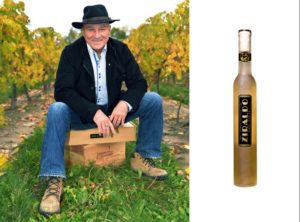 But more on that story later.
But more on that story later.
As the Round Table of Canadian wine legends goes, Donald Ziraldo has King Arthur’s chair, with an industry presence dating back to 1974. Frustrated by the quality—or lack thereof—of Canadian wines, Ziraldo and Austrian immigrant Karl Kaiser formed a partnership that year, planting primarily climate-tolerant clones of Riesling, Chardonnay and Gamay, before founding Inniskillin the following spring—securing, in the process, the first Ontario winery licence to be handed out since 1929.
Suffice it to say, the dynamic duo helped put Canadian wine on the map, with their most notable accomplishment being the coveted Grand Prix d’Honneur at Vinexpo Paris in 1991 for the 1989 vintage of their Vidal icewine.
Inniskillin was sold to Constellation Brands 15 years ago, following a hostile takeover, with Ziraldo leaving three months afterward to form his own brand. But the tradition continued, with the inaugural vintage (2014) of Ziraldo Estate Riesling Icewine earning best-of-the-best honours at Vinexpo 2017 and a gold medal at the Sommelier’s Choice Awards in 2020.
Which meant Ziraldo had to find even more room in the house for boxes of honours that already included a pair of Honourary Doctor of Laws Degrees (Brock and Guelph), a Canadian Agriculture Hall of Fame induction, a copy of the 1999 National Post Business Magazine article listing him among the Top 25 Canadian CEOs of the Century, as well as the Order of Ontario (1993) and the Order of Canada (1998), the latter being highest tribute paid to Canadian citizens.
There’s even an honourary citizenship from Friuli, Italy (his father emigrated from the region to Ellis Island, New York City, as a stowaway on an ocean liner in 1923).
The 71-year-old former nursery owner, however, may have set his sights on his most daunting challenge to date—helping to preserve the Greenbelt while simultaneously making room for development in the increasingly crowded Niagara peninsula.
TheLushLife: I hear it was a tough year for the icewine harvest.
DZ: “It didn’t get cold until February. Ideally the window for harvest is mid-December to mid-January, which is when you get the highest yields. As time goes on, between the wind, the birds and dehydration, the crop diminishes pretty quickly. There were actually some bunches that I crushed in my hand that felt like a handful of Corn Flakes. The Riesling harvest was less than 50% of the regular volume. Vidal, on the other hand has a thicker skin, so is more resistant to the elements. But it was a tough year for Riesling.”
You still selling at the same price, though?
Yes, the Riesling is $89—from the Ziraldo vineyard. We usually do 6,000 bottles of Riesling, but will be lucky to get 2,000 for the 2020 vintage this year. The 2020 should probably be $300, considering the harvest!” (laughs). The 2019 Vidal is currently sold out. However, the 2019 Vidal will be available soon.
I expect you’re excited about the overall 2020 Ontario harvest, though?
“Across the board, the harvest in the fall was small, but the quality exceptional. I recently tasted a 2020 Cabernet Franc from 2027 Cellars and it seemed already finished, which is quite amazing. Mother Nature made the wine this year, as most winemakers would tell you. Winemaker Kevin Panagapka, who I am helping mentor, did that Cab Franc appassimento-style (leaving the grapes to dry on racks in order to concentrate the flavour and sugar). He thought it was too heavy with too much alcohol, and wanted to lighten it up a bit by blending it. But I said, ‘Don’t you dare touch it! It’s gonna be a spectacular wine!’ It was beautifully balanced.”
Appassimento seems to be a growing style trend.
“Marco Piccoli (at Alterra Wines Canada) is doing some. Big Head Wines does everything—even their Riesling—in appassimento. And there are others. But the thing you have to be careful about is that while you can concentrate the goodness, you will also concentrate the badness. Some think that if the fruit isn’t ripe enough or they overcrop it, they can simply use appassimento to make it better. But it’s the opposite, because it concentrates the ‘off’ aromas or unripe tannins too.”
I’ve spoken to some winery owners who believe that the pandemic is leading to a permanent shift in the business model, with fewer tour buses and more bookings by appointment.
“I agree. The busloads are a blessing and a curse. I actually think you’re going to see wineries diversify—some will want the Niagara Falls crowd, whereas the wine collector/aficionado types are going to search out other wineries.
There’s been an increase in the market for affordable wines too.
“One of the things that has changed is the explosion of bag-in-a-box—they’ve gone from one shift to three shifts for bottling. Back when I was the founding chair of VQA (1988-1995), we didn’t allow bag-in-a-box or screwcaps—it was frowned upon back then. Now, of course, that’s changed. If the wine is good, bag-in-a-box is acceptable, because it’s just a means of delivery.”
“With all due respect, Mr. Ford, do you have your head buried in the sand? The environment doesn’t care what political party you belong to.”
You’re quite publicly standing up for the Greenbelt. Why does it seem like many others are hesitant too step into that spotlight?
“Because farmers get subsidies from the government, so they don’t want to criticize. And the wine industry won’t say anything because they sell to the LCBO, so no one wants to bite that hand. So most people are typically very Canadian—they behave nicely and just keep taking it.”
You’re concerned about the the rise of Minister’s Zoning Orders.
“I am very worried. I was on the Greenbelt Advisory Task Force in 2004 when we hammered this out. We visited each county, toured the entire Greenbelt footprint, toured quarries, toured agriculture, etc. We even had two developers on the committee. And here we are, 20 years later, and they’re probably going to be filling up what was protected back then. And with the population migration from Toronto to Niagara—I don’t even call it ‘sprawl’ anymore, I call it ‘migration’—it’s going to be overwhelming.
“There is supposedly a permanent Greenbelt in the fruitlands in Niagara, but with these MZOs, they have the opportunity to chew away, with a little chunk in Grimsby, a little chunk in Stoney Creek, a little chunk in West St. Catharines. And then slowly over the next 20 years it’ll just be (an extended) subdivision or industrial park.
“But proposing no development is not constructive either, in my opinion. I think when you complain about something, it’s important that you have a solution. My solution is that if Premier Ford wants to build a highway, he can freeze everything below the escarpment and build the Mid-Peninsula Corridor above the Escarpment, where grape growing is, at best, marginal. Get agriculture to delineate the wetlands and prime agriculture. You have the people you need for development up there, and that land is deeply in need of development. Welland and Fort Erie are screaming for it. It would also create traffic relief for the QEW. Then perhaps we’d get a high-speed train. Maybe Bombardier, since they can’t seem to get their act together in South Africa, can do a train for Niagara/Canada.
“I’ve contacted Brock University (home of CCOVI, the Cool Climate Oenology and Viticulture Institute), and they are prepared to engage in a 50- to 100-year plan for the Peninsula.
You must be getting support from local government, though, given the importance of the wine industry to the local economy.
“The Regional Chair, Jim Bradley, is very supportive. And if there are clearly defined boundaries, it makes life easier for the municipality and developers, because they can say, ‘You can only develop here and you farm here.’ But then there’s the constant pressure on the municipalities from the developers, who have strong lobby groups and bring in tax revenue. But it can be done. The best analogy I can make is another wine region, Tuscany. It’s pristine and beautiful and you don’t see any subdivisions. And yet you can take Italy 3 1/2 times and put it into the province of Ontario. So it’s just a question of planning and vision.”
I expect protecting the environment of the region is quite personal to you, given your footprint in the Ontario wine industry.
“The Supreme Court just passed a ruling that climate change is real. With all due respect, Mr. Ford, do you have your head buried in the sand? The environment doesn’t care what political party you belong to.
“My young son, who is eight years old, and his friend Olivia read Greta Thornburg‘s book, No One Is Too Small to Make a Difference, and asked if I had read it? I said, ‘No, but I know who she is.’ Olivia said, ‘Your dad is really cool, because a lot of dads don’t know who she is.’ I believe these kids are going to make a change in the world.”
Let’s talk about happier times. What was your most memorable wine-drinking experience?
“That would be Château d’Yquem in the mid-90s (Sauternes in southern Bordeaux, France). The exact moment was when I was at the New York Wine Experience. It’s a by-invitation-only event—we’d been invited because of our 1991 Vinexpo award. Everybody was there—Château Margaux, Petrus, Torres, Mondavi, Antinori—and somebody said, ‘Donald, do you know who that guy is at the corner of your booth?’ I looked over and said, ‘Oh shit, that’s the Count! (Alexandre de Lur Saluces, owner of Château d’Yquem).
“The reason he was standing there was because the Château Petrus and d’Yquem’s tables only have to bring one case of their wine, since it’s so very precious. The rest of us had to bring four cases. So when the doors opened, everybody rushed to those two booths, so they ran out first. So as he was standing at the back of my booth, he invited me to a lunch in Toronto at the French Ambassador’s residence, as well as a $2,500-a-plate formal Ambassador’s dinner for charity that evening. For lunch, I brought a bottle of Inniskillin icewine as a gift for each of the Count and the French Ambassador. The Ambassador apologized to the Count because they couldn’t afford Sauternes wine for dessert on their budget. And the Count says, ‘That’s OK, let’s open that icewine at Ziraldo just gave us!’
“You should’ve seen the look on the Ambassador’s face. It was priceless.”
As the world of wine goes, that’s a pretty nice friend to make.
“After we won the award for Vinexpo, the Count invited me to his place. Every year the Châteaux have a little reception—except for the one that he does, only the French usually get invited. I invited a friend of mine, who is a journalist from the U.S., to join me, and she said, ‘Donald there is no way you will get inside.’ And I said, ‘It’s okay, I’ve been invited.’ The Count made a comment to somebody once that he didn’t pay much attention to the competition, ‘except these Canadian icewine folks’—he did notice them. So we drank 1986 d’Yquem and ate lemon cake. I must admit it was one of the few times I got tipsy. I don’t know if it was the sugar or the alcohol, but the combination was awesome!”
And your best Canadian wine experience?
“I must tell you, that 2020 Cab Franc vintage from Kevin at 2027 Cellars was a standout. I look for the 2020 vintage to turn the corner for Canadian red wines. People always say, ‘Yes, they make great white wines, but the reds are a little thin because of the climate.’ In my opinion, Cabernet Sauvignon is a variety I won’t even bother with. There are years you will never get Merlot or Cab Sauvignon to ripen here, so why would you bother with it when you can do a much better job focusing on Pinot Noir, Cab Franc and Gamay?”
So there’s a bright future of Niagara wine?
“Absolutely. With the delivery being better, I think people are going to become more local-conscious in their purchases. If they support local we might have masks, vaccines and wine and food that we can have readily available, healthier and fresher. And I think you will see specialization by wineries that focus on various wine types and icewine.”
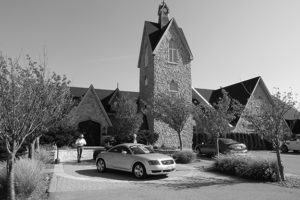
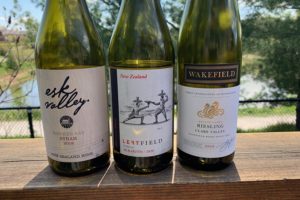
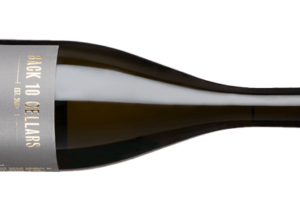
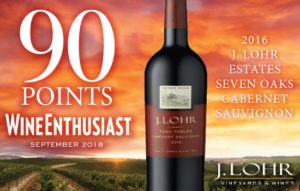
Leave a Reply
Your email is safe with us.